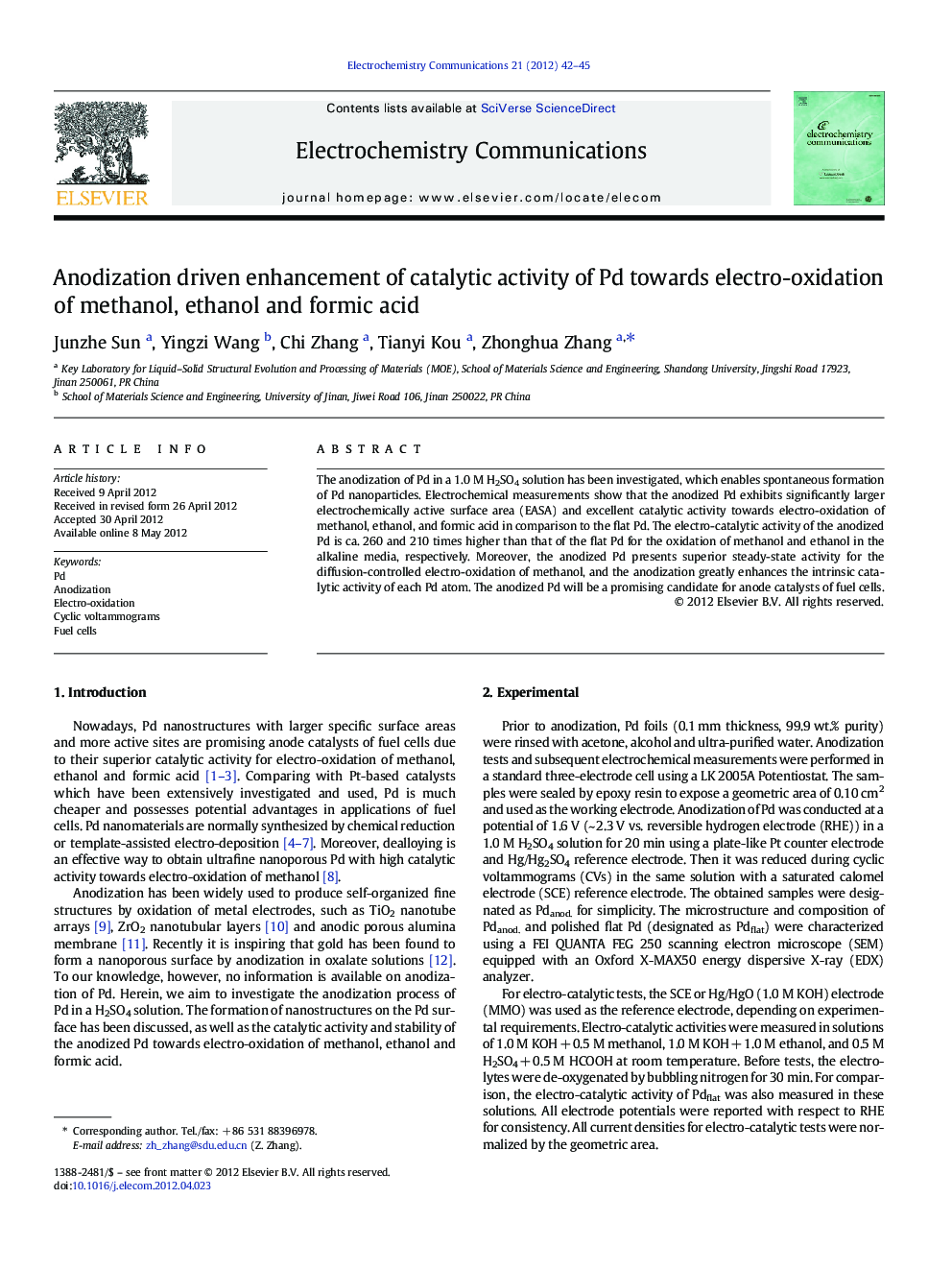| Article ID | Journal | Published Year | Pages | File Type |
|---|---|---|---|---|
| 179445 | Electrochemistry Communications | 2012 | 4 Pages |
The anodization of Pd in a 1.0 M H2SO4 solution has been investigated, which enables spontaneous formation of Pd nanoparticles. Electrochemical measurements show that the anodized Pd exhibits significantly larger electrochemically active surface area (EASA) and excellent catalytic activity towards electro-oxidation of methanol, ethanol, and formic acid in comparison to the flat Pd. The electro-catalytic activity of the anodized Pd is ca. 260 and 210 times higher than that of the flat Pd for the oxidation of methanol and ethanol in the alkaline media, respectively. Moreover, the anodized Pd presents superior steady-state activity for the diffusion-controlled electro-oxidation of methanol, and the anodization greatly enhances the intrinsic catalytic activity of each Pd atom. The anodized Pd will be a promising candidate for anode catalysts of fuel cells.
► Pd nanostructure forms by anodization/CV reduction in 1.0 M H2SO4 solution. ► The EASA of Pdanod. is approximately 44 times that of Pdflat. ► Activity of Pdanod. is 260 times higher than that of Pdflat for methanol oxidation. ► Activity of Pdanod. is 210 times higher than that of Pdflat for ethanol oxidation. ► Simple way to increase catalytic activity of Pd anode for fuel cells is presented.
